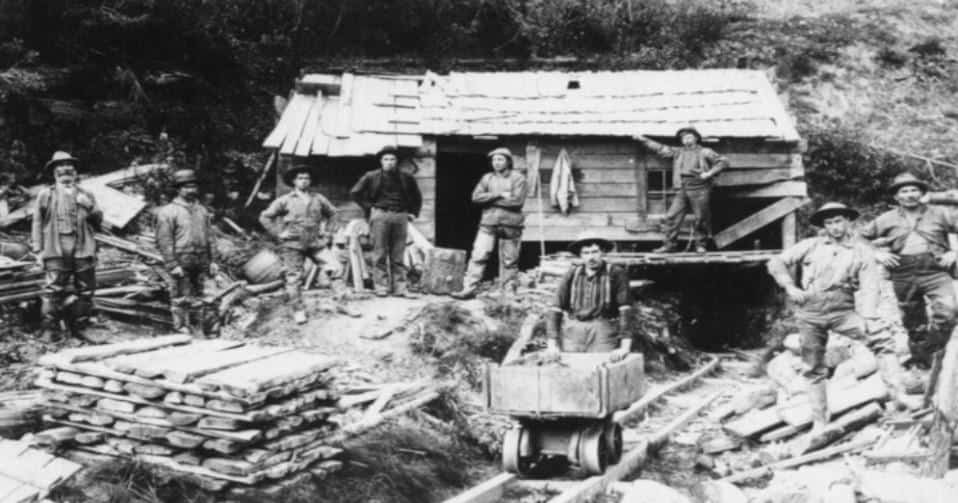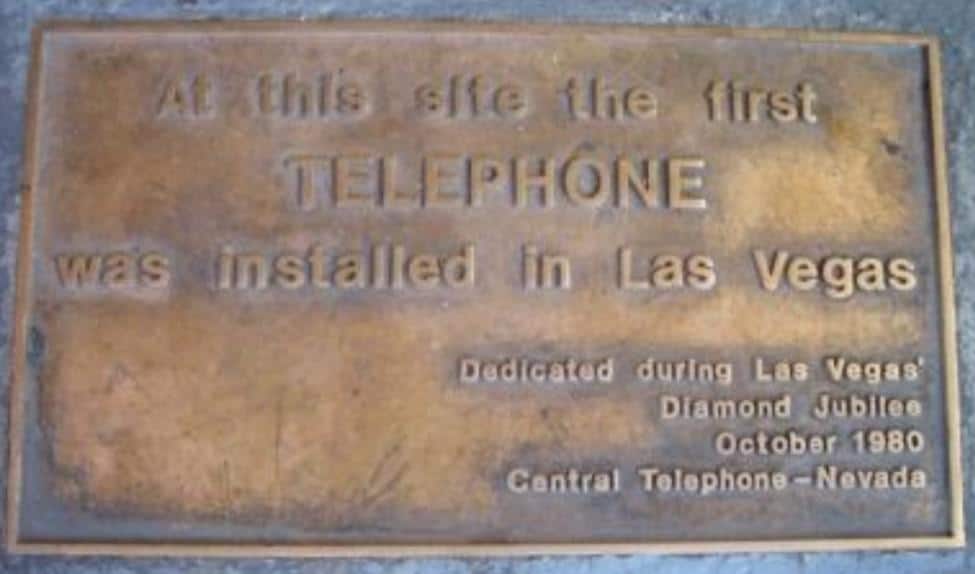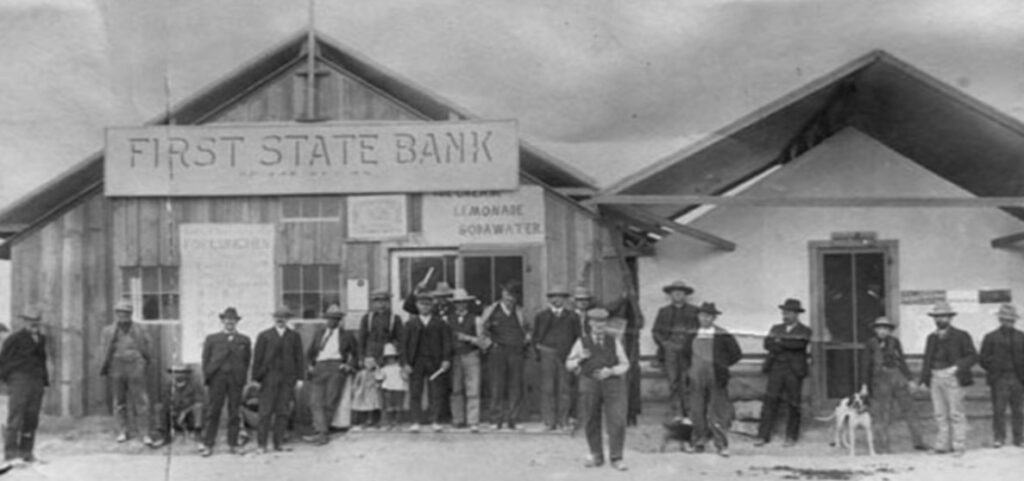
The Gold Rush in the Nevada Desert and Las Vegas in the 1800s
The history of Nevada and its association with gold dates back to the early 1800s when the state experienced its own gold rush. Before this the Nevada Desert was sparsley populated. The discovery of precious metal in the Nevada Desert led to significant growth and development in the region. In this article, we will explore the captivating story of the Gold Rush in the Nevada Desert and its influence on the rise of Las Vegas.
Introduction to the Nevada Gold Rush
The Nevada Gold Rush was a significant event that unfolded in the mid-19th century, attracting thousands of fortune seekers from all over the world to this harsh desert. It all began in 1849 when gold was discovered in California, leading to a massive influx of prospectors in search of their fortunes. As the easily accessible gold deposits in California diminished, prospectors began exploring neighboring regions, including the vast Nevada Desert.
The Discovery of Gold in the Nevada Desert
The Comstock Lode: One of the most remarkable gold discoveries in Nevada was the Comstock Lode. In 1859, two miners named Henry Comstock and Ethan Allen Grosh made an extraordinary find while searching for gold in Six-Mile Canyon, near present-day Virginia City. They stumbled upon a rich vein of silver ore, which eventually led to the discovery of immense amounts of gold and silver.
The Comstock Lode: A Rich Silver Discovery
The Comstock Lode was a legendary silver deposit discovered in 1859 in the Nevada Desert, near what is now known as Virginia City. The discovery of this massive deposit of silver ore revolutionized mining in the American West and played a direct role in the growth and development of Nevada.
The Discovery
The Comstock Lode owes its name to Henry Comstock, a prospector, and Ethan Allen Grosh, his partner, who initially claimed the discovery. Legend has it that Comstock stumbled upon a blue-gray substance while exploring the area. Thinking it was an indicator of a rich silver vein, he staked his claim. Later analysis confirmed that the blue-gray substance was indeed silver ore.
Richness and Extent
The richness and extent of the Comstock Lode were unparalleled at the time. The lode consisted of a massive silver deposit embedded within quartz veins, stretching for over three miles in length and up to a depth of 3,000 feet. The sheer magnitude of the deposit made it one of the most significant discoveries in the history of mining.
Mining Operations
The extraction of silver from the Comstock Lode proved to be an immense challenge. Initially, miners employed placer mining techniques, such as panning and sluicing, to recover silver from surface deposits. However, as the surface deposits dwindled, more advanced methods were required to reach the silver ore deep underground.
To extract the silver from the ore, miners employed a process known as the “Washoe Process.” This involved crushing the ore and then using a combination of chemical processes, including amalgamation with mercury, to separate the silver from other minerals. The Washoe Process revolutionized silver extraction, making it possible to recover substantial amounts of silver from the Comstock Lode.
Boomtown of Virginia City
The discovery of the Comstock Lode sparked a frenzied rush of miners and fortune seekers to the area, giving rise to the boomtown of Virginia City. Initially a small mining camp, Virginia City rapidly grew into a bustling population that exceeded 20,000 at its peak. The town served as the center of mining operations and became one of the most significant urban centers in the western United States.
Virginia City was a hub of activity, with numerous businesses, saloons, and theaters catering to the needs and desires of the miners. The town boasted impressive infrastructure, including schools, churches, and even an opera house, making it a vibrant and culturally rich community.
Technological Innovations
The extraction of silver from the Comstock Lode required constant innovation and the development of new mining techniques. One notable technological advancement was the introduction of the “square set” timbering method. This technique involved constructing precise timber frameworks to support the underground tunnels, ensuring the safety of miners and allowing for more efficient extraction of silver ore.
Economic Impact
The Comstock Lode had a profound impact on the economy of Nevada and the entire region. It quickly became one of the most productive silver mines in the world, contributing significantly to the wealth of the mining companies and investors involved. The silver extracted from the Comstock Lode played a crucial role in supplying the growing industrial demand for the precious metal.
The economic impact extended beyond mining operations. The wealth generated by the Comstock Lode fueled economic growth and development in Nevada. The money flowing into the region led to the establishment of banks, businesses, and infrastructure projects, including railroads and telegraph lines. The newfound prosperity of Nevada attracted entrepreneurs, laborers, and merchants, contributing to the multicultural fabric of the state.
Legacy and Decline
While the Comstock Lode experienced remarkable success during its early years, the mining operations faced several challenges that ultimately led to its decline. Some of these challenges included:
Deeper Mining: As the easily accessible silver deposits near the surface were exhausted, mining companies had to dig deeper into the earth to reach the ore. Deeper mining presented logistical difficulties and increased costs, making it less profitable for many miners.
Water and Flooding: The Comstock Lode was plagued by water infiltration and flooding due to its location in a mountainous region. Miners had to continually pump out water to access the ore, which added to the operational costs and made mining more challenging.
Declining Silver Content: Over time, as mining operations went deeper, the average silver content in the ore decreased. This meant that more ore had to be processed to obtain the same amount of silver, further increasing costs and diminishing profitability.
Labor and Safety Concerns: The harsh working conditions and safety hazards associated with deep underground mining led to labor disputes and accidents. These issues added to the challenges faced by the mining industry in maintaining a steady workforce.
As the profitability of the Comstock Lode declined, many mining companies faced financial difficulties, leading to closures and consolidations. By the early 20th century, the once-booming mining operations had significantly diminished.
Historical Significance and Preservation
Despite its decline, the Comstock Lode remains a significant part of Nevada’s history and the American West. Virginia City, the town that thrived during the peak of the silver mining era, has been designated a National Historic Landmark District. Today, visitors can explore the well-preserved historic buildings, museums, and mines that offer a glimpse into the vibrant past of the Comstock Lode.
The legacy of the Comstock Lode extends beyond the physical remnants of mining. It represents the spirit of exploration, entrepreneurship, and determination that characterized the American West during the 19th century. The Comstock Lode’s impact on Nevada’s economy, infrastructure, and cultural fabric cannot be understated, as it laid the foundation for the state’s continued growth and development.
In conclusion, the discovery of the Comstock Lode in the Nevada Desert marked a turning point in the history of mining in the American West. The rich silver deposits and the subsequent boomtown of Virginia City shaped Nevada’s economy, attracted immigrants, and left a lasting legacy. While the Comstock Lode eventually faced challenges and declined, its historical significance and preserved heritage continue to fascinate and educate visitors about the allure and hardships of the silver mining era.
FAQs (Frequently Asked Questions)
1. Was gold also found in the Comstock Lode? Yes, while the primary focus of the Comstock Lode was silver, significant amounts of gold were also extracted from the ore deposits.
2. How much silver was extracted from the Comstock Lode? Estimates suggest that approximately 400 million ounces of silver were extracted from the Comstock Lode during its heyday.
3. Did any famous personalities have a connection to the Comstock Lode? Mark Twain, the renowned American author, briefly worked as a reporter in Virginia City during the height of the Comstock Lode’s operation.
4. Are there any guided tours available to explore the Comstock Lode’s history? Yes, visitors to Virginia City can partake in guided tours of the historic mines and museums to learn more about the Comstock Lode and its impact on the region.
5. Did the decline of the Comstock Lode affect Nevada’s economy? The decline of the Comstock Lode had a significant impact on Nevada’s economy. As mining operations dwindled, the state experienced an economic downturn. Many mining companies closed, leading to job losses and a decline in population. However, Nevada eventually diversified its economy by focusing on other industries such as agriculture, tourism, and later, the gaming industry in Las Vegas.
6. Is it possible to visit the actual mining sites of the Comstock Lode? Yes, visitors can explore some of the actual mining sites of the Comstock Lode. Many historic mines offer guided tours, allowing visitors to witness firsthand the conditions and processes involved in silver mining during the era.
7. Are there any notable silver artifacts or treasures associated with the Comstock Lode? While there aren’t any specific treasures or artifacts that can be attributed solely to the Comstock Lode, the silver extracted from the mine played a role in the growth of the American economy during the 19th century.
8. Are there any ongoing mining operations in the area today? While the Comstock Lode itself is no longer an active mining site, there are still mining operations in other parts of Nevada, extracting various minerals including gold, silver, copper, and lithium.
9. Did the Comstock Lode lead to any technological advancements in mining? Yes, the challenges faced during the mining operations at the Comstock Lode spurred technological innovations. The square set timbering method, mentioned earlier, revolutionized underground mining and influenced mining practices worldwide.
10. Can visitors try their hand at panning for gold or silver in the area? There are recreational mining opportunities available in certain areas near the Comstock Lode. Visitors can try their luck at panning for gold or silver in designated locations with the appropriate permits and following local regulations.
Mining Camps: The discovery of the Comstock Lode triggered a frenzied rush of miners and speculators to the area. Numerous boomtowns and mining camps sprouted up almost overnight. These settlements provided essential infrastructure and services to support the burgeoning mining industry. The most famous of these towns was Virginia City, which became a bustling metropolis and the center of the Nevada Gold Rush.
The Gold Rush and The Gaming Industry
The influence of the Gold Rush on popular culture eventually found its way into the gaming industry. Game developers recognized the appeal of gold and gold mines as thematic elements in their creations. This led to the rise of gold and gold mine themed slots and games, which captured the imagination of players worldwide.
Gold has always been associated with wealth, prosperity, and the fulfillment of dreams. The concept of striking gold resonates with players who are seeking excitement, thrill, and the potential of substantial rewards. Gold mine themes evoke a sense of adventure and exploration, adding an extra layer of excitement to gaming experiences.
The gaming industry has embraced the allure of gold and gold mines by incorporating these themes into a wide variety of games. Whether it’s slot machines, video games, or online casino games, players can now embark on virtual gold mining adventures from the comfort of their own homes. The incorporation of gold and gold mine themes allows players to immerse themselves in a world of riches and challenges.
Game developers strive to create immersive experiences for players. Gold mine themed games often feature rich graphics, captivating sound effects, and engaging storylines that take players on a virtual journey through mines filled with treasures waiting to be discovered. These games offer a unique blend of excitement, strategy, and the thrill of uncovering valuable treasures.
Gold and silver have also found their place in the economies of various games. In some games, players can acquire virtual gold and silver through gameplay and then use these precious metals to purchase in-game items or enhance their gaming experience. The presence of gold and silver in game economies adds an additional layer of depth and realism to the virtual worlds.
Gold is often used as a symbol of achievement, wealth, and success in gaming. Whether it’s earning a coveted in-game currency or unlocking rare items, the acquisition of virtual gold can be a significant milestone for players. The symbolism of gold adds a sense of accomplishment and progression to the gaming experience, further enhancing its appeal.
The introduction of gold and gold mine themed games has had a notable impact on the gaming industry. These games attract a wide audience, including both casual players and dedicated gamers. The incorporation of gold and gold mine themes has added a new dimension to the gaming landscape, offering players unique experiences and captivating gameplay.
In conclusion, the Nevada Gold Rush left a lasting legacy not only in terms of the physical landscape but also in its influence on popular culture and entertainment. The allure of gold and the mystique of gold mines continue to captivate the imaginations of people worldwide. The gaming industry, recognizing this appeal, has embraced gold and gold mine themes, creating immersive experiences that allow players to embark on virtual treasure hunts. The influence of the Nevada Gold Rush on the gaming industry is a testament to the enduring power of these precious metals and their place in our collective imagination.
Las Vegas and Gambling History

Las Vegas History: Railroad Development Paved the Way for Las Vegas to Become the Gambling Capital of the World

Las Vegas History: Doc Holliday Famous Gambler Gunslinger and Resident of Las Vegas

Las Vegas History: How Las Vegas’ First Telephone Exchange Made Bugsy Siegel’s Race Wire Possible

Las Vegas History: The Official Naming of Las Vegas 1905

Las Vegas History: 1864 Las Vegas The Impact of Nevada Statehood






